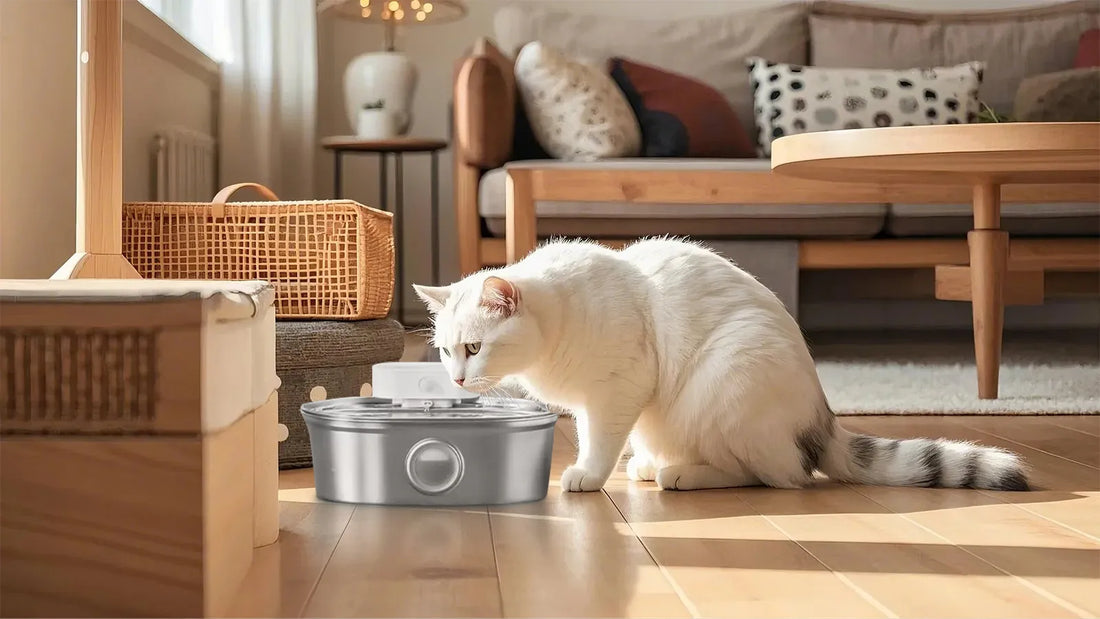When it comes to caring for your large dog, every detail matters, including how they eat and drink. A raised dog bowl for large dogs is more than just a feeding accessory; it’s a tool that can significantly improve your pet’s health and comfort. In this article, we’ll delve into the benefits of raised dog bowls, the different types available, and tips for selecting the right one for your canine companion.
Why Choose a Raised Dog Bowl for Large Dogs?
Large dogs, especially those with long legs or deep chests, often struggle with traditional floor-level bowls. Bending down to eat or drink can cause strain on their neck, back, and joints. A raised dog bowl elevates the food and water to a more comfortable height, reducing the risk of musculoskeletal issues and promoting better posture during mealtime.
Additionally, raised dog bowls can help prevent bloating, a serious condition that affects larger breeds. By positioning the bowl at an appropriate height, your dog can eat at a slower pace, reducing the likelihood of swallowing air, which is a common cause of bloating.
Types of Raised Dog Bowls for Large Dogs
Raised dog bowls come in various styles and materials to suit different needs and preferences. Here are some popular options:
Adjustable Height Bowls
These bowls allow you to customize the height based on your dog’s size and comfort. They are ideal for growing puppies or households with multiple dogs of different sizes.
Stainless Steel Bowls
Known for their durability and ease of cleaning, stainless steel bowls are a practical choice for large dogs. They are resistant to rust and bacteria, ensuring a hygienic feeding experience.
Ceramic Bowls
Ceramic bowls are stylish and heavy, making them less likely to tip over. However, they require careful handling to avoid chipping or cracking.
Plastic Bowls
Lightweight and affordable, plastic bowls are a common choice. However, they may not be as durable or hygienic as other materials, especially for dogs that chew or scratch their bowls.
How to Choose the Right Raised Dog Bowl for Your Large Dog
Selecting the perfect raised dog bowl involves considering several factors to ensure it meets your dog’s needs. Here are some tips to guide your decision:
Measure Your Dog’s Height
To determine the ideal bowl height, measure your dog from the floor to their chest while they are standing. The bowl should be positioned so that your dog can eat comfortably without bending too much.
Consider the Material
Choose a material that is durable, easy to clean, and safe for your dog. Stainless steel and ceramic are excellent options for large dogs, while plastic may be better suited for smaller or less destructive breeds.
Check the Stability
Large dogs can be strong and energetic, so opt for a bowl with a sturdy base to prevent tipping or sliding during mealtime.
Look for Easy Maintenance
Feeding bowls should be easy to clean to maintain hygiene. Dishwasher-safe bowls or those with smooth surfaces are ideal for quick and thorough cleaning.
Additional Tips for Using a Raised Dog Bowl
Once you’ve chosen the right raised dog bowl, there are a few additional tips to ensure your dog benefits fully from it:
Monitor Your Dog’s Eating Habits
Observe your dog while they eat to ensure they are comfortable and not experiencing any difficulties. If you notice any issues, adjust the bowl height or position as needed.
Keep the Bowl Clean
Regularly clean the bowl to prevent the buildup of bacteria or food residue. This is especially important for large dogs, as they tend to eat larger quantities of food.
Introduce the Bowl Gradually
If your dog is used to eating from a floor-level bowl, introduce the raised bowl gradually. Allow them to explore and get comfortable with the new setup at their own pace.
Common Misconceptions About Raised Dog Bowls
Despite their benefits, there are some misconceptions about raised dog bowls that may deter pet owners from using them. Let’s address a few of these myths:
Raised Bowls Cause Bloating
While some believe that raised bowls increase the risk of bloating, research suggests that the opposite is true. Properly positioned raised bowls can help reduce the likelihood of this condition by promoting slower eating.
Only Older Dogs Need Raised Bowls
While raised bowls are beneficial for senior dogs with joint issues, they are also advantageous for younger, larger breeds. Using a raised bowl early on can prevent future health problems.
Raised Bowls Are Unnecessary
Some pet owners may think that raised bowls are just a luxury. However, they can significantly improve your dog’s eating experience and overall well-being, making them a worthwhile investment.
Frequently Asked Questions About Raised Dog Bowls for Large Dogs
Here are answers to some common questions pet owners have about raised dog bowls:
What is the ideal height for a raised dog bowl?
The ideal height depends on your dog’s size and breed. Measure from the floor to your dog’s chest and choose a bowl that positions the food or water at that level.
Can raised dog bowls be used for small dogs?
Yes, raised dog bowls can benefit small dogs as well, especially those with short legs or joint issues. However, ensure the height is appropriate for their size.
Are raised dog bowls easy to clean?
Most raised dog bowls are designed for easy cleaning. Stainless steel and ceramic bowls, in particular, are dishwasher-safe and resistant to bacteria.
Final Thoughts on Raised Dog Bowls for Large Dogs
Investing in a raised dog bowl for your large dog is a simple yet effective way to enhance their quality of life. From improving posture and reducing joint strain to preventing bloating, the benefits are undeniable. By choosing the right bowl and using it correctly, you can ensure your furry friend enjoys a comfortable and healthy mealtime experience. So, why wait? Make the switch to a raised dog bowl today and see the difference it makes for your beloved pet.













